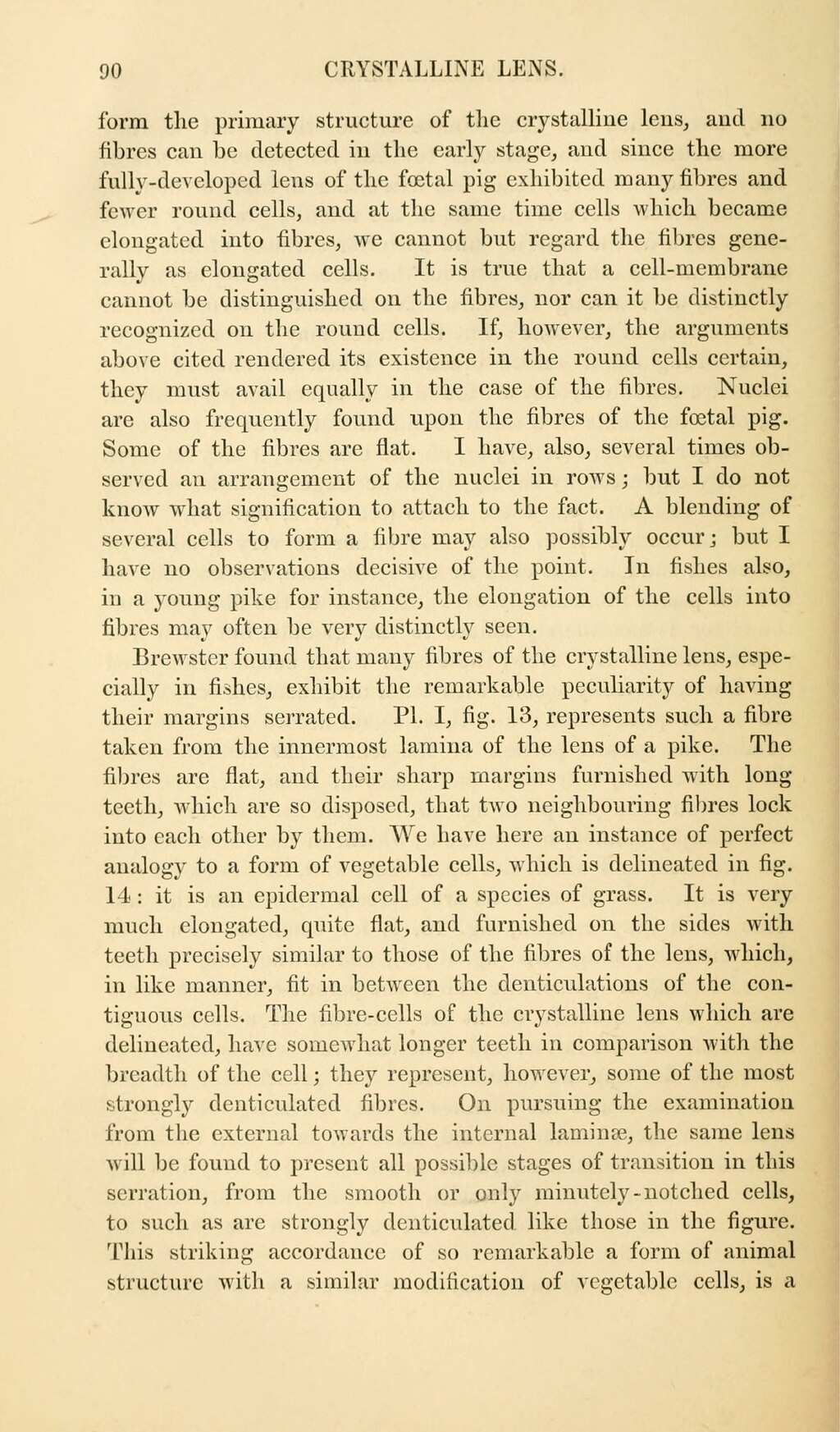form the primary structure of the crystalline lens, and no fibres can be detected in the early stage, and since the more fully-developed lens of the foetal pig exhibited many fibres and fewer round cells, and at the same time cells which became elongated into fibres, we cannot but regard the fibres generally as elongated cells. It is true that a cell-membrane cannot be distinguished on the fibres, nor can it be distinctly recognized on the round cells. If, however, the arguments above cited rendered its existence in the round cells certain, they must avail equally in the case of the fibres. Nuclei are also frequently found upon the fibres of the foetal pig. Some of the fibres are flat. I have, also, several times ob- served an arrangement of the nuclei in rows; but I do not know what signification to attach to the fact. A blending of several cells to form a fibre may also possibly occur; but I have no observations decisive of the point. In fishes also, in a young pike for instance, the elongation of the cells into fibres may often be very distinctly seen.
Brewster found that many fibres of the crystalline lens, especially in fishes, exhibit the remarkable peculiarity of having their margins serrated. PIL. I, fig. 13, represents such a fibre taken from the innermost lamina of the lens of a pike. The fibres are flat, and their sharp margins furnished with long teeth, which are so disposed, that two neighbouring fibres lock into each other by them. We have here an instance of perfect analogy to a form of vegetable cells, which is delineated in fig. 14: it is an epidermal cell of a species of grass. It is very much elongated, quite flat, and furnished on the sides with teeth precisely similar to those of the fibres of the lens, which, in like manner, fit in between the denticulations of the contiguous cells. The fibre-cells of the crystalline lens which are delineated, have somewhat longer teeth in comparison with the breadth of the cell; they represent, however, some of the most strongly denticulated fibres. On pursuing the examination from the external towards the internal lamine, the same lens will be found to present all possible stages of transition in this serration, from the smooth or only minutely-notched cells, to such as are strongly denticulated like those in the figure. This striking accordance of so remarkable a form of animal structure with a similar modification of vegetable cells, is a
